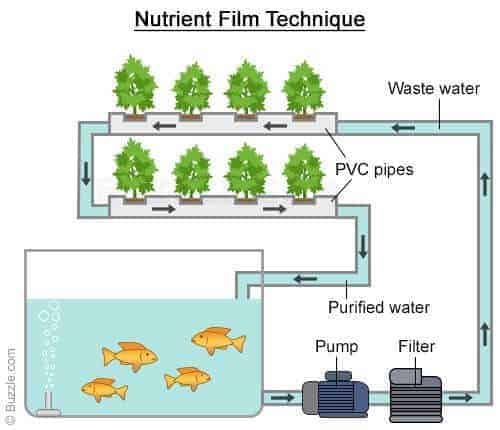
Now do Farming without Farmland | BLOG SHURUWAATAGRI
- Ayushi Shrivastav
- Jan 30, 2022
- 4 min read
Updated: Feb 4, 2022
Context
Introduction:
“ Soilless farming denotes farming performed without soil”
Cultivating plants without soil, only providing essential nutrients directly to the roots for optimum growth, is a modern farming technique.
For the rapidly increasing population and dearth of land and water reserves, the modern technique of growing plants without the help of soil has been now initiated and attaining a rage among agriculturists and business-oriented organizations.
Why Soilless Cultivation :
Rapidly increasing population and their requirements for food impetus soilless cultivation.
Depletion of land and water resources due to urbanization.
Efficient use of inputs in soilless cultivation.
Can eradicate losses due to soil-borne pests and weeds.
Saves capital and human power, used for intercultural operations in traditional agriculture.
Soilless cultivation is an overall worthwhile method of modern farming techniques.
Methods to do Soilless Farming :
Here are some theories, that define soilless farming in a broad sense.
Hydroponics, Aeroponics, and Aquaponics are the modern way of farming without the help of soil ( soilless farming).
Let’s go thoroughly to understand the concepts of these modern techniques and how effective are for humankind as well as the environment.
Hydroponics :

Hydroponics is the method of growing plants with the help of a water supply.
This soilless farming method needs essential nutrients in the water for plant growth.
Minerals enriched water supply to the plants through waterways arranged in specific technique so that water is able to reach through every plant roots.
The pH and nutrients of water are to be maintained for every variety of plant requirements.
Off-season vegetables and fruits can be grown nicely in the hydroponics unit.
For soilless farming, a hydroponics unit should be made with proper arrangements. Temperature, humidity, and water supply should be managed regularly.
Pros of Hydroponics:
Hydroponics promotes vertical farming, which does not need much ground area.
Hydroponics method of soilless farming leads to more yield than traditional farming for the same area of land.
In hydroponics, the cropping cycle is shorter than traditional farming for a particular variety of crops.
In today’s urban environment, hydroponics is a method of growing crops in a packed area without any damage.
Hydroponics lowers water wastage. It requires 10 percent of water used in traditional farming.
In hydroponics, water is directly provided to the roots, hence water loss by soil absorption and air absorption can be reduced at a higher level.
Hydroponics promotes organic farming. In Hydroponics, since it is soilless farming thus, soil-borne diseases and pests can be fully eradicated.
Hydroponics does not promote the use of insecticide and pesticides thus we can obtain the best quality yield.
Can reduce the wastage of produce which due to transportation, low market demand, diseases, pest, etc.
Cons of Hydroponics:
Hydroponics requires intensive- capital at the time of the establishment of the system and greenhouses.
For a regular supply of water and nutrients, it requires an uninterrupted power supply.
Hydroponics is a technology, developed mainly for farmers' welfare. Farmers are still unaware of these soilless farming techniques.
Poor management and care lead to a loss in production.
Aeroponics:
In this method of soilless agriculture, plants roots are suspended in the air. The plants are grown in a humid environment without soil and flowing water in outlets.
The nutrients and water are provided to the plants by the spraying system.
The temperature, humidity, pH level, and water conductivity can be controlled inside a greenhouse.
Pros of Aeroponics :
The plants are less suffer from transportation in Aeroponics system.
Aeroponics requires ¼ nutrient input for plants compared to hydroponics.
No use of pesticides and insecticides results in better quality yield, free from pollutants.
A fully covered area keeps plants away from the outside environment and climatic effects.
According to the University of Mississippi crops grown in an aeroponics system, produce more than 30% yield than traditional agriculture systems.
According to NASA, plants are grown in an aeroponics system up to 3× faster than traditional agriculture and yield are more consistent compared to soil farming.
NASA compared that in aeroponics system the use of water is less up to 98% than traditional agriculture.
An aeroponics system requires only 10 percent of the space used in traditional farming.
Cons of aeroponics:
It requires more technical knowledge.
It requires more attention and care to set up and run the aeroponics system. Any negligence leads to heavy loss due to perishing plants.
An aeroponics system is highly expensive. It requires 8 crores per hectares to setting up a system.
Plants require constant attention for better growth and the success of technology.
Due to any component failure, the whole system can become useless and lead to the failure of the method.
Aquaponics:
The combination of hydroponics and aquaculture makes a system, called Aquaponics.
The aquaponics system promotes the method of growing plants and fish together.
The feces of the fish works as nutrients for plants. Plants clean water which is recirculated to the fish tank.
Pros of Aquaponics:
No synthetic chemicals are used in an aquaponics system. Fish excretions provide nutrients to the plants.
In an aquaponics system, two agriculture products ( Fish and vegetables ) are cultivated at the same time.
Aquaponics system is a highly water-efficient system, that can save 80-90% of water than traditional agriculture.
The aquaponics system can be set as an aquarium or as a greenhouse.
Cons of Aquaponics:
Requires ideal environment suitable for fishes and plants both.
The Aquaponics system is more complex than hydroponics.
In Aquaponics, there are more system failures due to fish mortality or plant caused by pathogens.
















Comments